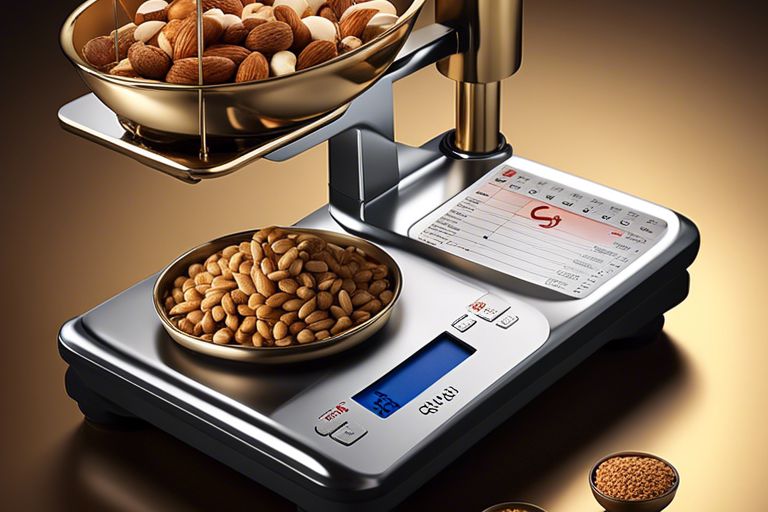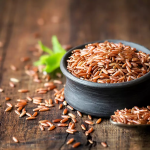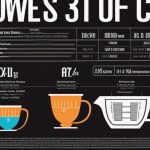Curious about the conversion between grams and ounces? Understanding the metric system and imperial units can be confusing, but fear not! In this comprehensive guide, we will delve into the precise measurement of grams in an ounce. Whether you’re a seasoned chef needing to convert ingredients for a recipe, a student tackling a science experiment, or simply curious about the conversion, this article will provide you with the knowledge and confidence to make accurate conversions effortlessly. Let’s dive in and demystify this common conversion once and for all!
Understanding the Basics
Defining an Ounce
For those new to the world of measurements, an ounce is a unit of weight used in both the imperial and US customary systems. In these systems, an ounce is equivalent to 1/16 of a pound. This translates to approximately 28.35 grams. Ounces are commonly used to measure ingredients in recipes, precious metals like gold and silver, as well as in the sale of goods such as beverages.
Understanding the weight of an ounce is essential in various fields, including cooking, science, and commerce. It forms the basis for converting between different units of weight and plays a crucial role in day-to-day measurements.
Defining a Gram
Basics of the metric system, a gram is a unit of mass equal to one-thousandth of a kilogram. It is commonly used in scientific and medical contexts due to its precision. One gram is approximately equivalent to 0.035 ounces, making it a smaller unit of weight compared to the ounce.
On the other hand, a gram is a versatile unit of measurement, frequently used in laboratories, pharmacies, and nutritional information labels on food products. Its practicality in measuring small quantities with accuracy has made it indispensable in various scientific and commercial applications.
The gram is a fundamental unit of measurement that provides a precise way to quantify the weight of objects or substances. It plays a crucial role in fields such as chemistry, physics, and medicine where accuracy and consistency are paramount.
Historical Context and Usage
To understand the significance of grams and ounces in modern-day measurement systems, it is essential to delve into their historical context. The concept of the gram originated in France during the late 18th century when the metric system was first introduced. This system aimed to standardize measurements and promote uniformity in trade and scientific endeavors.
Grams and ounces have stood the test of time and are still widely used today, showcasing the enduring legacy of historical measurement systems. From the French Revolution to the present day, these units have played a pivotal role in shaping how we quantify weight and mass.
How-To: Converting Ounces to Grams
The Standard Conversion Method
One of the most common conversion tasks in the kitchen or lab is converting ounces to grams. To convert ounces to grams, you can use the standard conversion rate of 1 ounce is equal to 28.35 grams. This conversion rate is widely accepted and used in most recipes and scientific calculations.
Conversion from ounces to grams is a simple multiplication. You take the number of ounces you have and multiply it by 28.35 to get the equivalent weight in grams. For example, if you have 10 ounces, the conversion to grams would be 10 x 28.35 = 283.5 grams.
Tools and Calculators for Conversion
For those looking for a quick and easy way to convert ounces to grams, there are various online tools and calculators available. These tools provide a simple interface where you can input the number of ounces, and they will instantly give you the equivalent weight in grams. This makes conversions fast and accurate, especially when dealing with multiple measurements.
For those who prefer offline methods, there are also conversion charts and tables that provide a quick reference for converting between different units of measurement. These resources can be handy to have on hand when measuring ingredients or conducting experiments that require precise measurements.
Tools and calculators can be invaluable for quick and accurate conversions, especially when working with unfamiliar units of measurement or dealing with large quantities. By utilizing these resources, you can ensure that your conversions are precise and avoid costly errors in your cooking or experiments.
Tips for Accurate Measurement
Converting ounces to grams accurately requires attention to detail and proper measurement techniques. When measuring ingredients, always use a reliable kitchen scale or laboratory balance to ensure precise results. Avoid approximations or estimations, as they can lead to inaccuracies in your conversions.
- Use the appropriate units of measurement for the task at hand.
- Double-check your calculations to ensure accuracy before proceeding with your recipe or experiment.
Converting ounces to grams with precision is essential for successful outcomes in your culinary creations or scientific endeavors. Any discrepancies in measurements can alter the final product or results, so it’s crucial to be meticulous in your conversions.
Factors Affecting Conversion
Not all conversions between units of measurement are straightforward. Several factors can impact the accuracy of these conversions, making it important to understand the variables at play. Here are some key elements to consider:
- Temperature and Density
- Substance Differences
- Measurement Precision
Temperature and Density
Any conversion of units, such as grams to ounces, can be affected by changes in temperature and density. These two factors play a significant role in altering the relationship between different units of measurement. Below is a breakdown of how temperature and density can influence conversions:
| Temperature | Density |
| Higher temperatures can cause substances to expand, affecting their weight and volume. | Denser materials will have different conversion rates compared to lighter materials. |
Substance Differences
With substance differences, it’s essential to recognize that not all materials have the same density or composition. This can lead to variations in conversion rates between different substances. When converting between grams and ounces, the specific substance being measured must be taken into account to ensure accuracy.
Plus, the state of matter (solid, liquid, gas) can also impact the conversion process, as the density and weight of a substance can change depending on its physical state. Thus, understanding the properties of the material being measured is crucial for precise conversions.
Measurement Precision
To ensure accurate conversions, measurement precision is key. The level of precision in the measuring instruments used can greatly impact the conversion between grams and ounces. Factors such as the calibration of the scale, the readability of the measurements, and the resolution of the measuring device all play a role in determining the accuracy of the conversion.
To take measurement precision into account, it is essential to use high-quality measuring tools and follow standard measurement practices. Factors such as environmental conditions, human error, and equipment calibration can all influence the precision of a measurement, ultimately affecting the conversion process.
Practical Applications
Cooking and Baking
To ensure precision in cooking and baking, it is crucial to measure ingredients accurately. With conversions like grams to ounces, chefs and bakers can follow recipes from around the world with ease. Whether you’re creating a delicate French pastry or a hearty Italian pasta dish, understanding the conversion between grams and ounces is essential for achieving the perfect results.
With 1 ounce equaling approximately 28.35 grams, you can easily adjust recipes or portion sizes based on your measurement preference. This knowledge also comes in handy when scaling up or down a recipe to feed a small family or a large gathering, making your cooking experience more flexible and customizable.
Science and Medicine
To conduct experiments accurately, scientists rely on precise measurements, including those in grams and ounces. In the field of medicine, dosages of certain medications are often measured in milligrams, a unit that can be converted from grams. Understanding the conversion between grams and ounces is crucial when working in labs, pharmacies, or healthcare settings, where accuracy is paramount for patient safety.
One gram is equivalent to 0.035 ounces, providing a common unit of measurement in scientific research and medical practice. This standardized system allows professionals in these fields to communicate effectively and ensure consistent results in their work.
Medicine, laboratory, dosage, patients, research, pharmaceuticals
International Trade
Applications of gram to ounce conversions extend to international trade, where products are often bought and sold based on weight. Whether importing spices from Asia or exporting textiles to Europe, having a clear understanding of grams to ounces conversion helps businesses negotiate deals and determine shipping costs effectively. This knowledge also comes in handy when complying with international regulations on product labeling and weights.
Any business involved in importing or exporting goods can benefit from understanding these conversions, ensuring smooth transactions and accurate measurements in a global marketplace. With a firm grasp of these units, companies can streamline their operations and avoid misunderstandings that could lead to costly errors.
Final Words
Summing up, there are 28.3495 grams in an ounce. This conversion factor is crucial to know for anyone dealing with weights, whether it be in the kitchen or in a scientific laboratory. Understanding the relationship between grams and ounces can help ensure accuracy in measurements and recipe proportions. By mastering this conversion, you will have a valuable tool that will assist you in various applications where precise weight measurements are required. Remember, one ounce is equivalent to approximately 28 grams, making it a key conversion factor to have at your fingertips.





